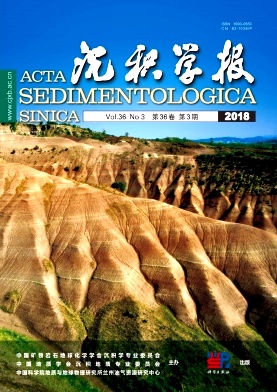Sedimentary Characteristics and Evolution of the Middle Permain Lucaogou Formation and Hongyanchi Formation on the Periphery of Bogda Mountain
doi: 10.14027/j.issn.1000-0550.2018.039
- Received Date: 2017-04-13
- Rev Recd Date: 2017-08-01
- Publish Date: 2018-06-10
-
Key words:
- Bogda Mountain /
- Lucaogou Formation /
- Hongyanchi Formation /
- stratigraphic characteristics /
- sedimentary facies /
- sedimentary evolution
Abstract: Through detailed outcrop observation and measurement of the Lucaogou and Hongyanchi Formations on the periphery of the Bogda Mountain, combined with drilling, well-logging and core data from the Chaiwobao depression, the stratigraphic characteristics, sedimentary facies types, and their distribution characteristics were deeply analyzed, furthermore, evolution process of the Lucaogou and Hongyanchi Formations were also discussed in this paper. The results showed that the Lucaogou and Hongyanchi Formations could be both divided into three members, the first through the third from the bottom up, which were kept relatively complete in the Chaiwogou depression whereas the residual thickness were varied in different areas in front of the Bogda Mountain with serious erossion. The sedimentary process of the Lucaogou formation to Hongyanchi Formation was from a lake transgression to a lake regression. The first and second members of Lucaogou Formation were mainly developed in a nearshore subaqueous middle fan and outer fan; the third member of Lucaogou Formation was widely developed in a semi-deep and deep lake. The first and second members of Hongyanchi Formation were mainly developed in fan delta front, sand bar and beach, and shore shallow lake whereas the third member was mainly developed in a fan delta plain.
| Citation: | WANG Yue, LIN HuiXi, ZHANG KuiHua, ZHANG GuanLong, WANG YuXin, BAI ZhongCai. Sedimentary Characteristics and Evolution of the Middle Permain Lucaogou Formation and Hongyanchi Formation on the Periphery of Bogda Mountain[J]. Acta Sedimentologica Sinica, 2018, 36(3): 500-509. doi: 10.14027/j.issn.1000-0550.2018.039 |






 DownLoad:
DownLoad: